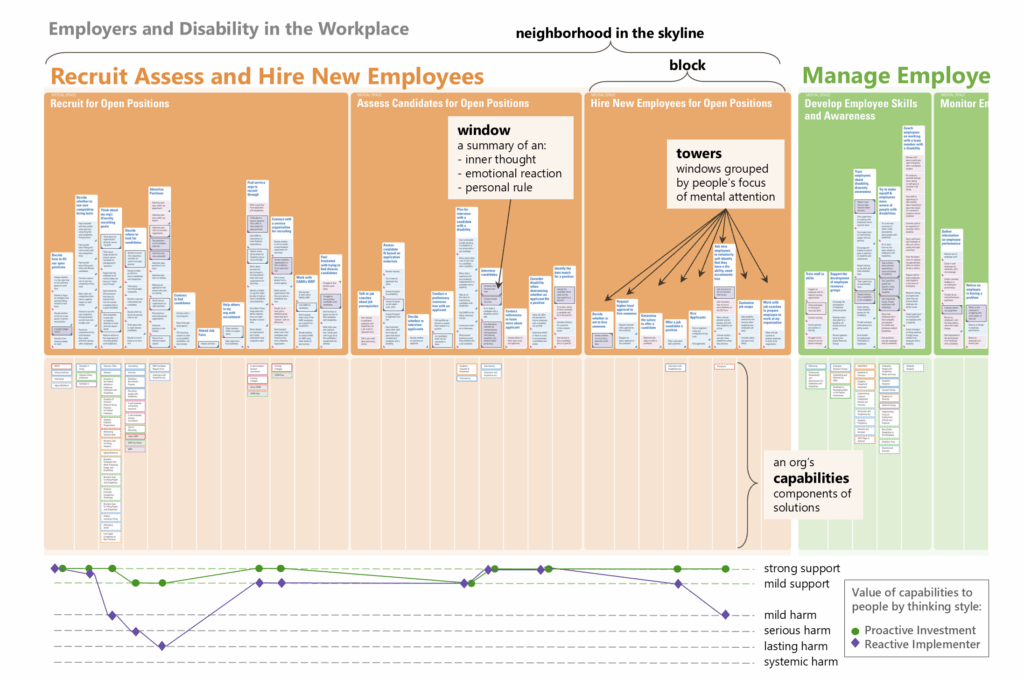Example: Employers and Disability Inclusion
In late 2011 Indi guided the team working for disability.gov at Cornell University through a study of employers who must adhere to U.S. disability employment law. The Employer Assistance and Resource Network on Disability Inclusion is the group that creates the solutions that were mapped below the towers in the resulting in the opportunity map. The study resulted in the clarification of two thinking styles among employers, and an opportunity map that revealed gaps in support for certain thinking, for certain types of disability, and for one of the clarified thinking styles.

Since 2011, the site navigation of the Federal Office supporting employers has improved, and the content structure changed, based on the mental model. The office is in the process of writing more content to fill in the gaps.
“This shift in audience segmentation has significant implications for how we choose to approach social marketing.”
Valerie Malzer
Empathetic Problem-Solvers: Best reached by social marketing that appeals to their existing desire to care fro their employees by increasing their awareness of disability in the workplace.
Organizational Implementers: More receptive to appeals that focus on disability relative to legal mandates and organizational objectives
Download the paper: Mental Modeling: A Qualitative Method for Mapping Audience Behaviors and Designing Social Marketing Initiatives by Valerie Malzer and Sarah von Schrader
2025 Update: In the update to the book Time to Listen, Indi included help/harm sparklines in the diagram. This is just a demonstration to show how an initial state might look, before a team started making improvements to raise the scores for the second thinking style.

